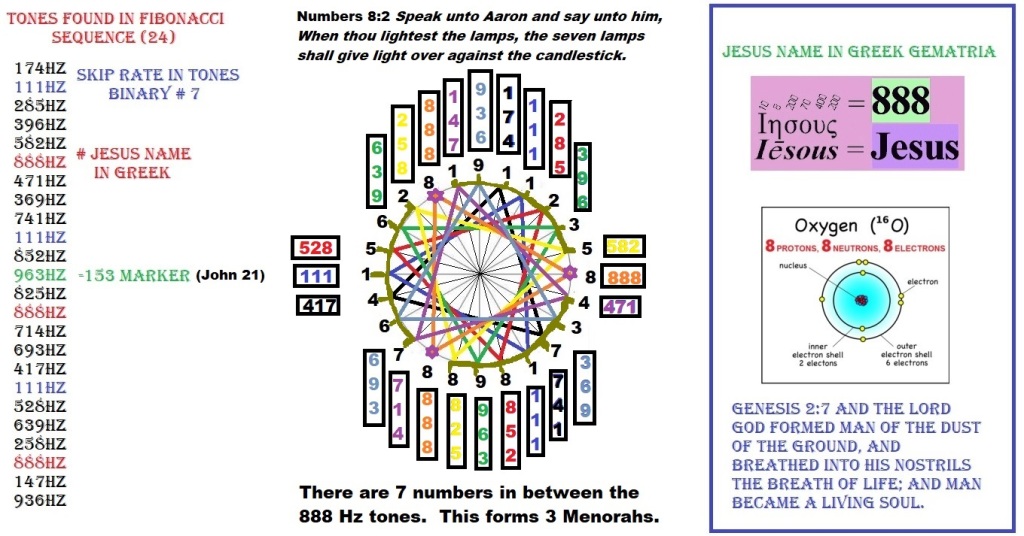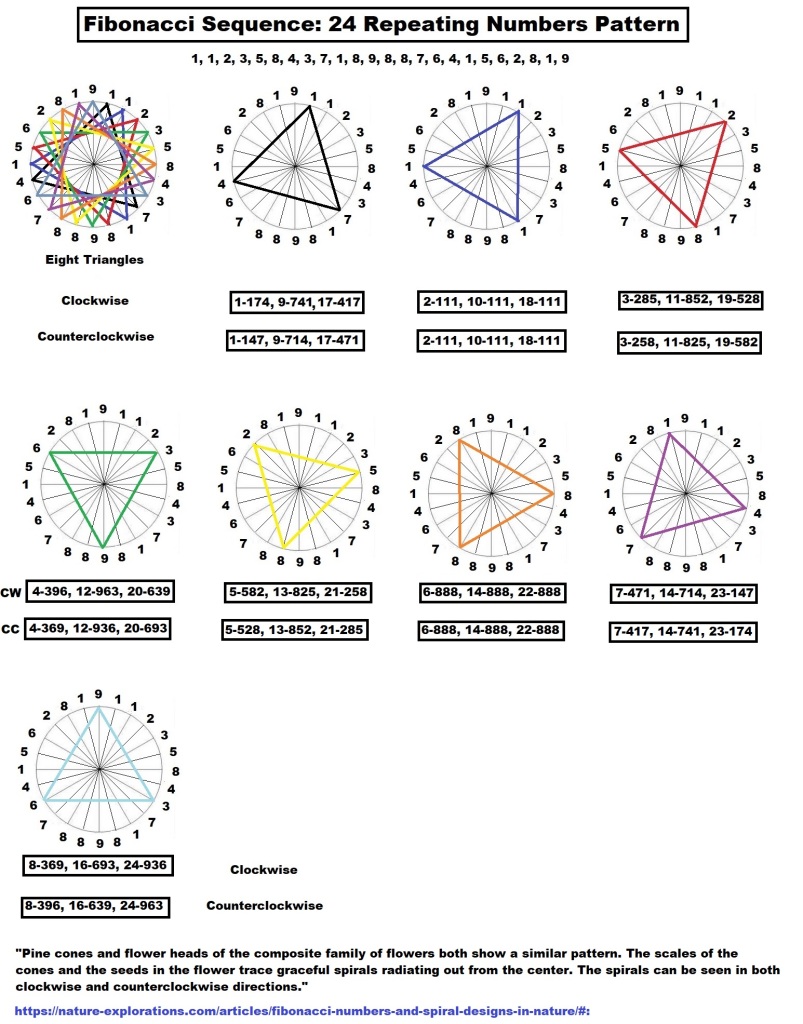Fibonacci number
In mathematics, the Fibonacci numbers, commonly denoted Fn , form a sequence, the Fibonacci sequence, in which each number is the sum of the two preceding ones. The sequence commonly starts from 0 and 1, although some authors start the sequence from 1 and 1 or sometimes (as did Fibonacci) from 1 and 2. Starting from 0 and 1, the first few values in the sequence are:[1] 0, 1, 1, 2, 3, 5, 8, 13, 21, 34, 55, 89, 144.
https://en.wikipedia.org/wiki/Fibonacci_number
The first 24 Fibonacci numbers can be reduced to a single integer by adding the digits together until you have reduced the number to a single digit. Applying the Pythagorean skein to the Fibonacci sequence reveals a 24 number pattern, which repeats indefinitely. Here is a graphic below:

This video explains how Devon Kramer discovered the Solfeggio tones in the Fibonacci sequence. He put the repeating Fibonacci single digit sequence into a 24 sectioned circle, and connected three digits into equilateral triangles to make 24 tones.
Here is his website:
https://www.9vibesuniversal.com/
Here are some graphics that I made about this Solfeggio tone sequence that is found in the Fibonacci numbers.



I noticed that Devon’s tone sequence was found reading the number clockwise, and I was wondering about the counterclockwise sequence. I did some research to see if the Fibonacci spiral is found both clockwise and counterclockwise in nature. Furthermore, I confirmed that both directions are represented in nature.
I plotted the numbers of the tones going counterclockwise, and here is the graphic that I made.
